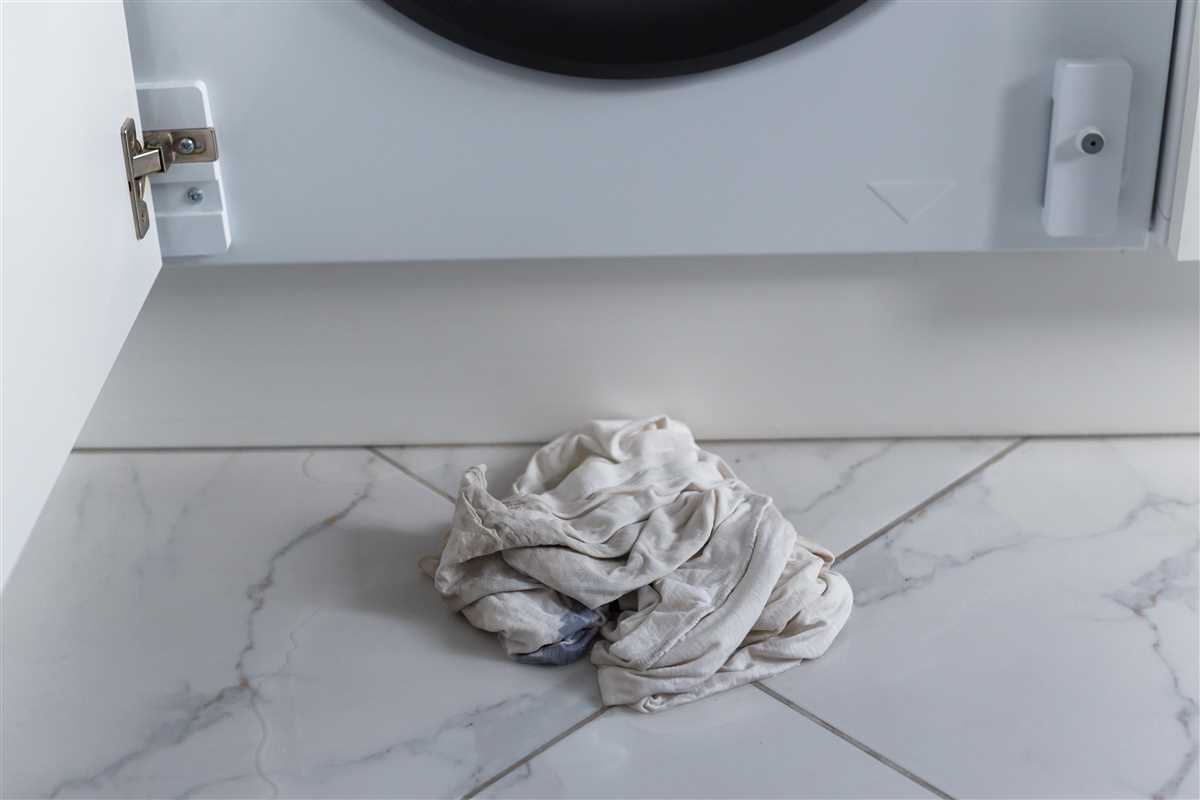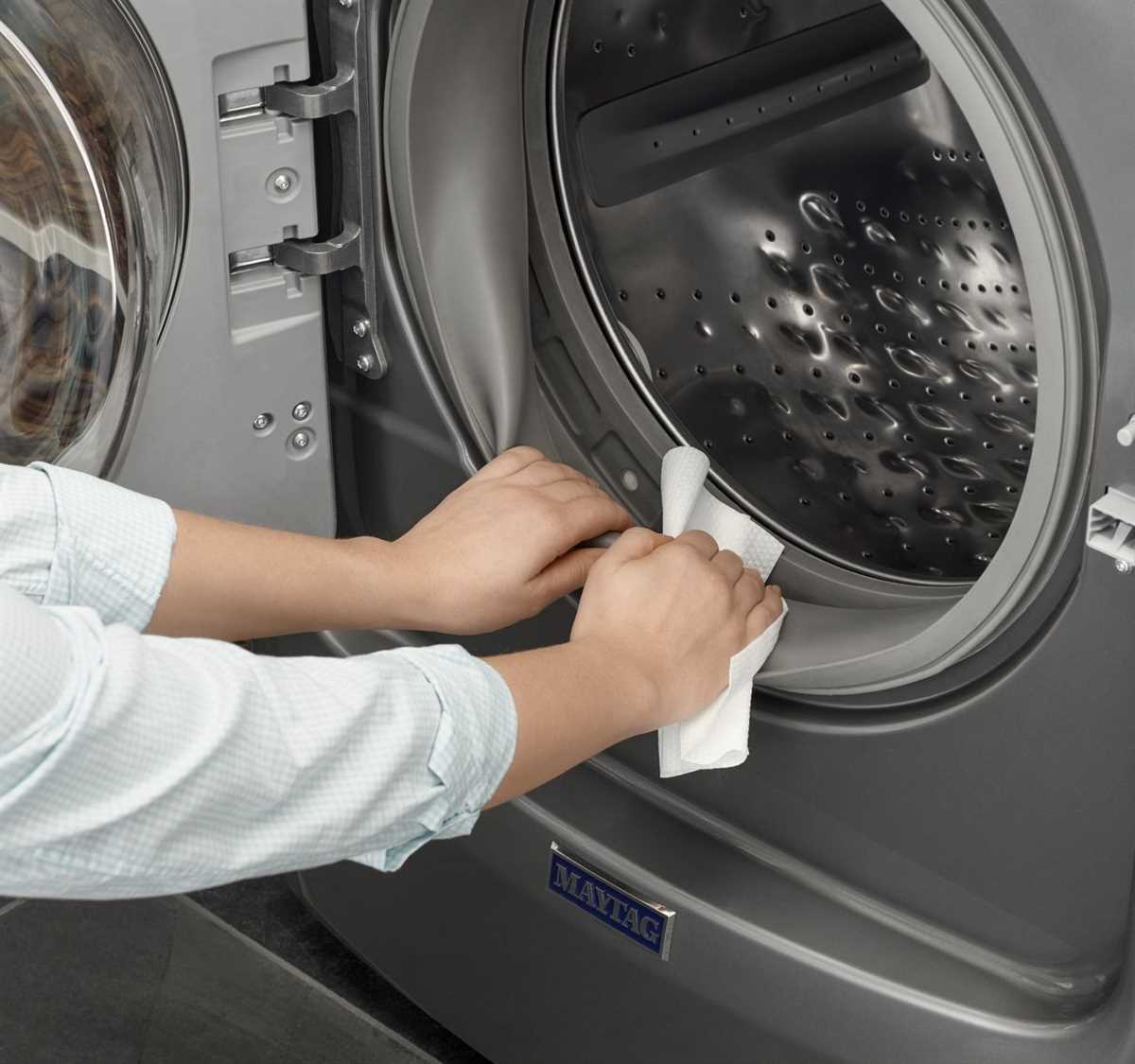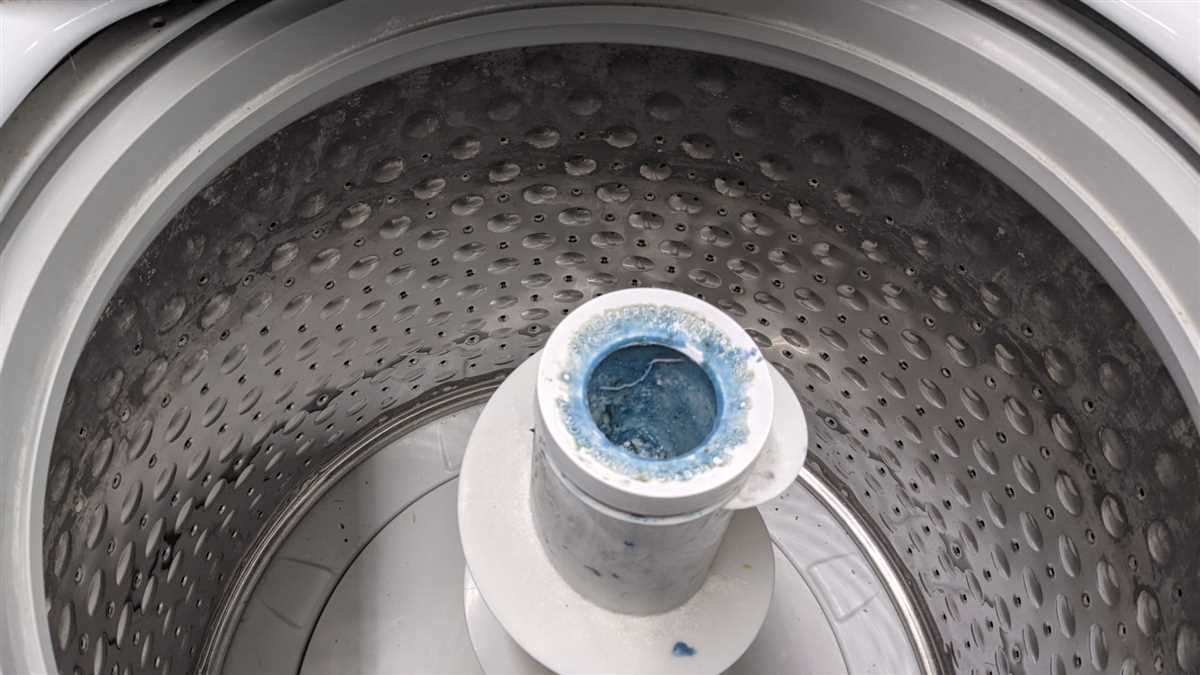




Water leaking from the bottom of your washing machine can be a frustrating problem. Not only does it create a mess, but it can also cause damage to your floors and potentially lead to more serious issues with your appliance. However, understanding the common causes of this issue and knowing how to address them can help you resolve the problem quickly and avoid any further damage.
One of the most common causes of water leakage from the bottom of a washing machine is a problem with the water supply hose. Over time, these hoses can become worn or develop cracks, leading to leaks. Inspect the hoses for any visible signs of damage and replace them if necessary. Additionally, ensure that the hose connections are tight and secure.
Another potential cause of water leakage is a damaged or clogged drain pump. The drain pump is responsible for removing water from the machine during the drain cycle. If it is not functioning properly, water can accumulate and leak from the bottom of the machine. Clean the drain pump filter regularly and check for any obstructions or signs of damage. If the pump is damaged, it may need to be replaced.
It is also important to check the detergent drawer for any blockages or obstructions. If the detergent drawer is clogged, water may overflow and leak from the machine. Remove the drawer and clean it thoroughly, ensuring that all detergent residue and debris are removed. This can help prevent future leaks and ensure proper functioning of the machine.
In some cases, the water leakage may be caused by a problem with the machine’s door seal or gasket. Over time, these seals can become worn or damaged, allowing water to escape. Inspect the door seal for any signs of wear or tears, and replace if necessary. Additionally, ensure that the door is closing tightly and securely.
In conclusion, water leaking from the bottom of your washing machine can have several potential causes. By inspecting and addressing common issues such as damaged water supply hoses, clogged drain pumps, blocked detergent drawers, and worn door seals, you can often resolve the problem and prevent further damage. If you are unable to identify or resolve the cause of the leak, it may be necessary to seek professional help or consider replacing your washing machine.
Possible Causes of Water Leaking from the Bottom of Your Washing Machine
If you notice water leaking from the bottom of your washing machine, there are several potential causes to consider. Identifying the source of the leak is important in order to determine the appropriate solution. Here are some common causes of water leakage and what you can do to fix them:
-
Loose or damaged hoses: Check the hoses connected to your washing machine for any signs of damage or looseness. Over time, hoses can develop cracks or become loose, causing water to leak. If you find any issues, tighten the connections or replace the hoses as necessary.
-
Drain pump issues: The drain pump is responsible for removing water from the machine during the drain cycle. If the pump is clogged or malfunctioning, water may leak from the bottom of the machine. Clear any blockages in the pump and ensure it is functioning properly. If necessary, replace the pump.
-
Worn-out or damaged tub seal: The tub seal is located between the outer tub and the transmission. If this seal is worn out or damaged, it can cause water to leak from the bottom of the machine. Inspect the seal for any signs of wear or damage and replace it if necessary.
-
Excessive detergent use: Using too much detergent can lead to excessive sudsing, which can overflow the tub and cause water to leak from the bottom. Make sure to follow the manufacturer’s recommended detergent dosage and avoid using more than necessary.
-
Leaking inlet valve: The inlet valve is responsible for filling the washing machine with water. If this valve is leaking, water can drip down to the bottom of the machine. Inspect the valve for any leaks and replace it if necessary.
-
Overloading the machine: Overloading the machine with too many clothes can cause excessive strain on the tub and other components, leading to water leakage. Make sure to follow the manufacturer’s recommended load capacity and avoid overloading the machine.
In conclusion, water leaking from the bottom of your washing machine can be caused by various factors, including loose hoses, drain pump issues, worn-out tub seals, excessive detergent use, leaking inlet valve, and overloading the machine. By identifying the source of the leak and taking appropriate action, you can prevent further water damage and ensure the proper functioning of your washing machine.
How to Identify if Your Washing Machine is Leaking from the Bottom
If you notice water pooling or dripping from the bottom of your washing machine, it is important to identify the cause of the leak and address it promptly to prevent further damage. Here are some steps you can take to identify if your washing machine is leaking from the bottom:
- Check the water supply hose connections: Inspect the connections between the water supply hoses and the back of the washing machine. Look for any signs of looseness or leaks. Tighten any loose connections and replace any damaged hoses.
- Inspect the drain hose: Examine the drain hose at the back of the washing machine and make sure it is securely connected to the drainpipe or laundry tub. Look for any kinks or bends in the hose that could be causing a blockage or leak. Straighten out any kinks and ensure the hose is properly aligned.
- Check the internal drain pump: If the drain hose is not the source of the leak, it’s possible that the internal drain pump is causing the issue. Carefully remove the bottom front panel of the washing machine and locate the drain pump. Look for any signs of leaks, cracks, or loose connections. If necessary, tighten connections or replace the pump.
- Inspect the tub seal and bearings: Over time, the tub seal and bearings in your washing machine can wear out and cause leaks. Remove the top or front panel of the washing machine (depending on the model) and inspect the area around the tub seal and bearings for any signs of water or damage. If you suspect a problem, it may be necessary to replace these components.
- Look for signs of overflow: If your washing machine is leaking from the bottom during the wash or rinse cycles, it could be due to an overflow issue. Make sure you are not overloading the machine with too many clothes or using too much detergent, as this can cause the water to overflow from the tub.
Remember, if you are unsure about how to identify or fix the source of the leak, it’s always best to consult a professional for assistance. They will have the experience and knowledge to diagnose the problem accurately and recommend the appropriate solution.
Possible Solutions for Water Leaking from the Bottom of Your Washing Machine

If water is leaking from the bottom of your washing machine, it is important to identify and fix the issue to prevent further damage. Here are some possible solutions to consider:
1. Inspect the hoses:

Start by checking the hoses connected to your washing machine. Make sure they are properly attached and not damaged or kinked. Tighten any loose connections and replace any worn or damaged hoses. Consider using stainless steel hoses, which are more durable and less likely to leak.
2. Check the water inlet valve:
The water inlet valve is responsible for controlling the flow of water into your washing machine. If it is faulty or damaged, it may cause water to leak from the bottom. Inspect the valve for any signs of wear or damage. If necessary, replace the valve to fix the issue.
3. Examine the drain pump:
The drain pump is responsible for removing water from your washing machine. If it becomes clogged or damaged, it may cause water to leak. Clean out any debris or obstructions from the drain pump, and test it to ensure it is functioning properly. If the pump is damaged, consider replacing it.
4. Check the tub seal and gasket:

The tub seal and gasket create a watertight seal between the tub and the door or lid of your washing machine. If they are worn or damaged, water may leak. Inspect the seal and gasket for any signs of wear, cracks, or leaks. If necessary, replace them to prevent further leakage.
5. Inspect the tub and drum:
Examine the tub and drum of your washing machine for any cracks or damages. If there are any, water may be leaking from them. Depending on the severity, you may need to repair or replace the tub or drum to resolve the issue.
6. Level the machine:
If your washing machine is not level, it may cause excessive vibrations during the spin cycle, leading to water leakage. Use a leveling tool to check the balance of your machine. Adjust the machine’s feet or use leveling pads to ensure it is stable and level on the floor.
7. Empty the drain filter:

Sometimes water leakage can be caused by a clogged drain filter. Locate and remove the drain filter, then clean out any debris or lint that may be obstructing it. Rinse the filter before reattaching it to the washing machine.
8. Call a professional:
If none of the above solutions solve the problem, it may be best to call a professional appliance repair technician. They will have the expertise and tools necessary to diagnose and repair the issue with your washing machine.
Remember to always disconnect your washing machine from the power source before attempting any repairs or inspections. Safety should be a top priority when working with any electrical appliance.
| Possible Solutions |
|---|
| Inspect the hoses |
| Check the water inlet valve |
| Examine the drain pump |
| Check the tub seal and gasket |
| Inspect the tub and drum |
| Level the machine |
| Empty the drain filter |
| Call a professional |
Preventive Measures to Avoid Water Leaking from the Bottom of Your Washing Machine
Water leaking from the bottom of your washing machine can be a common issue that can lead to water damage and other problems. Taking preventive measures can help you avoid this issue and ensure the efficient operation of your washing machine. Here are some steps you can take to prevent water leaks:
1. Check the hoses regularly

Inspect the hoses connected to your washing machine for any signs of wear, cracks, or bulges. These can indicate potential leaks. Replace the hoses if necessary, and consider upgrading to stainless steel hoses for added durability.
2. Tighten hose connections
Ensure that all hose connections are tight and secure. Over time, vibrations from the washing machine can loosen the connections, leading to leaks. Use pliers to tighten any loose fittings, but be careful not to overtighten and cause damage.
3. Level the washing machine
Make sure your washing machine is properly leveled. An uneven machine can cause excessive movement and strain on the hoses, which can result in leaks. Use a level to check the machine’s balance and adjust the feet if needed.
4. Use the appropriate amount of detergent

Using too much detergent can create excessive suds, causing overflow and leakage. Follow the manufacturer’s instructions for the correct amount of detergent to use based on the load size and type of detergent.
5. Avoid overloading the machine
Overloading the washing machine can put strain on the tub and cause water to leak from the bottom. Follow the recommended load capacity for your specific machine to avoid this issue.
6. Clean the filter regularly
A clogged filter can lead to drainage problems and water leakage. Check your washing machine’s manual for instructions on how to locate and clean the filter. Regular maintenance will help prevent clogs and keep your machine running smoothly.
7. Inspect the door seal

Examine the door seal for any signs of damage or wear. A damaged seal can allow water to leak out during the wash cycle. Clean the seal regularly and replace it if necessary.
8. Don’t leave the machine unattended while running
Leaving your washing machine unattended can lead to potential problems, including leaks. Stay close to the machine while it’s running, and if you notice any unusual noises, vibrations, or water leaks, stop the cycle and address the issue.
By following these preventive measures, you can reduce the risk of water leaking from the bottom of your washing machine, keeping your laundry area safe and free from water damage.
FAQ
Why is water leaking from the bottom of my washing machine?
There are several possible causes for water leaking from the bottom of your washing machine. It could be a problem with the water supply hoses, a faulty drain pump, a cracked or damaged tub, or a problem with the door seal.
How can I determine the cause of the water leak?
To determine the cause of the water leak, you can start by checking the water supply hoses for any signs of leaks or damage. You can also inspect the drain pump and tub for cracks or damage. If you notice any issues with the door seal, that could also be a possible cause for the water leak.
What should I do if I find a leak in the water supply hoses?
If you find a leak in the water supply hoses, you should immediately turn off the water supply to your washing machine and replace the hoses. It is important to use high-quality, reinforced hoses to prevent future leaks.
Can a faulty drain pump be repaired?
In some cases, a faulty drain pump can be repaired. However, if the pump is severely damaged or worn out, it may be more cost-effective to replace it with a new one. It is best to consult a professional technician to determine the best course of action.
How can I prevent water leaks from occurring in the future?
To prevent water leaks from occurring in the future, you should regularly inspect and maintain your washing machine. This includes checking the water supply hoses for any signs of wear or damage, cleaning the drain pump filter regularly, and ensuring that the door seal is clean and in good condition. It is also important to avoid overloading the machine, as this can put excess strain on the components and lead to leaks.











